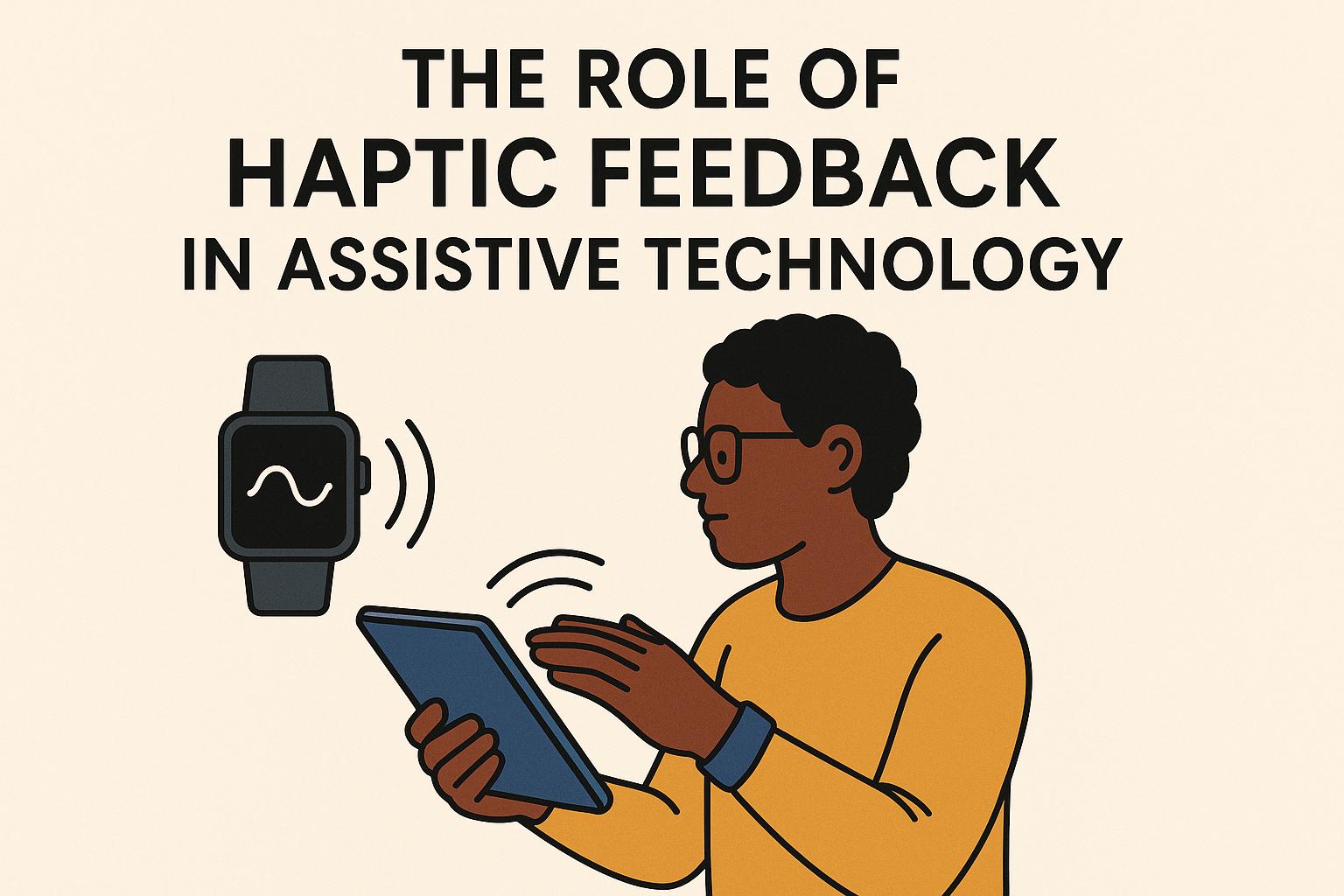Introduction to Haptic Feedback in Assistive Technology
Haptic feedback has increasingly become an integral aspect of assistive technology. By providing tactile feedback, it enhances the interaction between devices and users, particularly benefiting those with disabilities. This article explores the role and potential of haptic feedback in assistive technologies, shedding light on its importance for inclusivity and accessibility.
Understanding Haptic Feedback
Haptic feedback refers to the use of touch-based sensations to communicate with users. It involves the application of forces, vibrations, or motions to the sense of touch. In the context of everyday technology, haptic feedback is widely found in devices like smartphones and gaming controllers, where it provides tactile responses to user actions. In assistive technology, its role is profoundly significant, offering users new ways to interact with their environment and devices.
Applications in Assistive Technology
The applications of haptic feedback in assistive technology are diverse, aiming to cater to different needs based on the disabilities individuals may face. Here, we discuss some specific applications:
Visually Impaired Users
For individuals with visual impairments, haptic feedback can compensate for the lack of visual cues, allowing them to interact more effectively with digital interfaces. Devices equipped with haptic feedback can guide users through physical spaces or digital environments by providing tactile cues, enhancing navigation and spatial understanding. This capability is particularly critical in scenarios where traditional visual or auditory feedback might fall short, such as in noisy environments or when detailed visual inspection is not viable. Haptic feedback provides a layer of sensory input that does not rely on sight, thus enabling improved access to digital content, physical spaces, and electronic devices.
Hearing Impaired Users
For those with hearing impairments, haptic feedback can act as an alternative to audio signals. Alerts and notifications that typically rely on sound can be communicated through vibrations or touch patterns, ensuring important information is not missed. The transformation of auditory alerts into tactile signals allows hearing-impaired users to remain alert to important announcements, warnings, or communications without needing to rely on visual or auditory faculties. As such, haptic feedback becomes an inclusive mechanism, enhancing the capacity of hearing-impaired users to remain connected and responsive to their surroundings.
Motor Disabilities
Haptic feedback can aid individuals with motor disabilities by offering tactile cues that guide their interaction with devices, making it easier to perform specific tasks and increasing the overall ease of device use. With specific devices tailored to provide physical prompts or feedback, those with motor impairments can achieve greater autonomy in handling everyday tasks, such as typing, selecting items on touch screens, or managing input devices. These tactile cues offer physical confirmations that actions have been successfully executed, reducing the cognitive load on users and improving the overall user experience.
Challenges and Considerations
While haptic feedback holds significant promise for assistive technologies, its implementation is not without challenges. Some of the fundamental challenges include:
Technical Limitations: The precision of haptic responses and the complexity of programming tactile sensations pose considerable hurdles. Creating haptic systems that can emulate a range of textures, forces, and motions requires sophisticated technology that is not always feasible or cost-effective. The intricacy involved in ensuring that tactile feedback is precisely interpreted by the user necessitates advanced research and development, leading to higher initial costs and potentially limited scalability.
Individual Variability: Individual variability in how users perceive and respond to haptic feedback necessitates personalized solutions, adding layers of complexity to the development process. Each user may have a different tactile perception threshold, making it necessary to calibrate devices according to user-specific needs. Such customizations demand a deeper understanding of sensory processing and may require lengthy and expensive user testing phases to refine the tactile interfaces properly.
Future Outlook
The future of haptic feedback in assistive technology looks promising, thanks to rapid advances in the field. Research and development are continuously exploring new types of haptic devices and methods to create more refined and adaptable feedback systems. Such innovations can greatly enhance the independence and quality of life for users with disabilities. Manufacturers are working on breakthroughs that could, for example, integrate haptic systems with other sensory inputs to provide multi-sensory feedback, offering more vivid and intelligible interactions.
Moreover, there is a growing interest in making haptic feedback systems more intuitive and energy-efficient, lowering the barrier for widespread adoption in consumer technology. As the industry progresses, we can expect haptic technology to become even more prevalent in assistive products, with novel materials and tactile interfaces contributing to more versatile and user-friendly designs.
Conclusion
Haptic feedback stands as a frontier of innovation in assistive technology, holding the potential to bridge gaps in accessibility and offer new levels of user interaction. As technology evolves, the continued refinement and adoption of haptic feedback in assistive tools will play a crucial role in creating inclusive environments for all users. By developing better-integrated systems, developers can ensure that each user, regardless of the specific disability or technological need, has equal access to the information, interfaces, and interactions that shape their daily lives.
For further reading on how haptic feedback is shaping modern technology, consider exploring resources from Sensory Technology Research.
